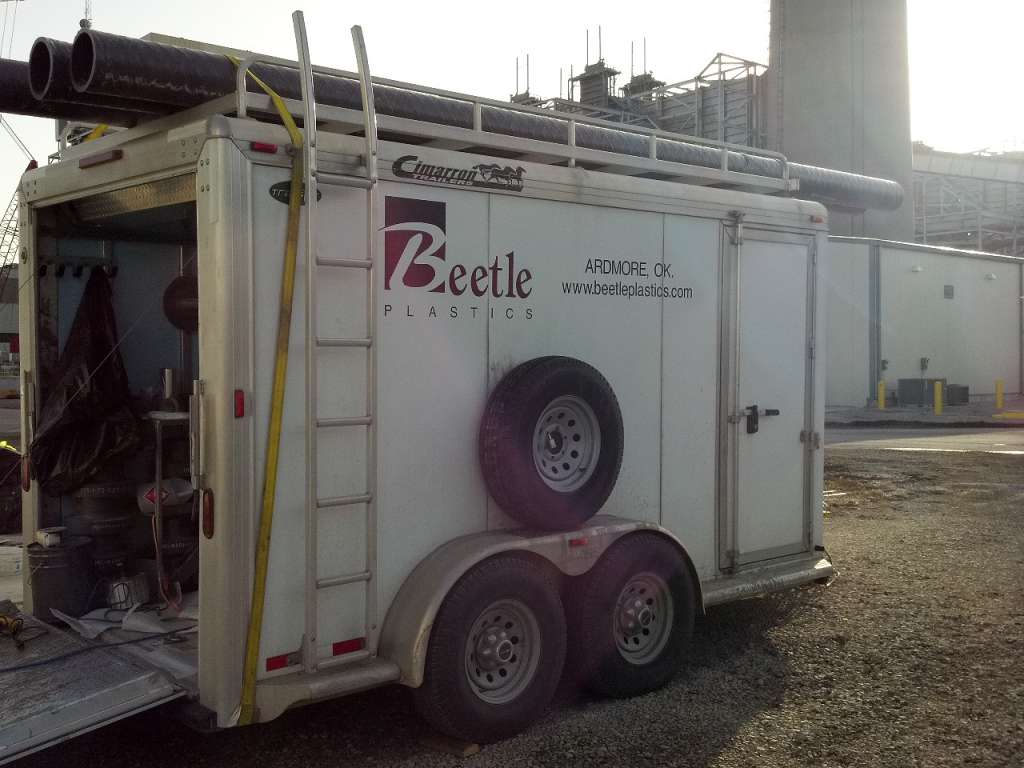FRP Solves Hydrochloric Acid Storage and Transportation Problems
 Hydrochloric Acid (HCL) also known as Muriatic Acid is a corrosive, stable mineral acid that is clear to slightly yellowish in color. Its versatility lends itself well to many industrial uses including hydraulic fracturing, pulp and paper, steel-making, PVC manufacturing, and chemical processing. Similarly, it’s also used in the production of high-fructose corn syrups. HCL, while being versatile and widely used is also highly corrosive which makes maintaining supply and hauling a challenge.
Hydrochloric Acid (HCL) also known as Muriatic Acid is a corrosive, stable mineral acid that is clear to slightly yellowish in color. Its versatility lends itself well to many industrial uses including hydraulic fracturing, pulp and paper, steel-making, PVC manufacturing, and chemical processing. Similarly, it’s also used in the production of high-fructose corn syrups. HCL, while being versatile and widely used is also highly corrosive which makes maintaining supply and hauling a challenge.
The History
HLC wasn’t always as widely used as it is today. Fuming Hydrochloric Acid’s history can be traced back to the Middle Ages when common salt was mixed with “Oil of Vitriol” (Sulphuric Acid) to produce Hydrochloric Acid. The word ‘Muriatic’ literally means ‘pertaining to salt or brine’. Fast forward a few hundred years and HCL made its recorded debut in the 17th century. However, it was not until market forces during Industrial Revolution, and an increased demand for alkaline products, that large-scale production of Fuming Hydrochloric Acid took place. Along with the large-scale production of HLC came large-scale needs for corrosion resistant vessels and piping for production, chemical storage, and transportation.
How corrosive is HLC?
In concentrations above 25%, HCL is considered highly corrosive and must be handled with extreme care and caution. In concentrations of approximately 35% and higher, HCL is referred to as fuming HCL or fuming Muriatic Acid.
Special requirements for handling, transporting, and storing HLC
When handling, transporting or storing HCL it is essential that is kept cool, dry and well ventilated. Industry specific drainage, venting, and corrosion resistant flooring can also present barriers to safe HCL storage. When storing or transporting HCL in large quantities, you must have a non-reactive, corrosion resistant chemical storage tank, pipe, vessel, or basin.
The Solution
Fiber Resistant Polymers (FRP) provide a high quality, durable, strong, corrosion resistant solution to this problem. At Beetle all of our FRP pipe, tanks, vessels, and containers for corrosive fluid services have a corrosion barrier or liner. The type and thickness of this corrosion barrier/liner depends upon the specific service environment.
FRP is an ideal solution not just because of its corrosion resistance, but also because of its versatility. FRP custom tanks, pipes, or vessels can come in a wide variety of sizes from ½” to 14’ in diameter. Also, custom FRP corrosion resistant piping is lightweight when compared to other materials and can be fine-tuned to fit tanker trucks and detailed to meet specific esthetic requirements. The high quality, durability, strength, corrosion resistance, and customization all make FRP an ideal solution for the challenges associated with HLC.

 The corrosion and abrasion resistance of fiberglass reinforced plastics (FRP) make FRP ideal for handling caustic and abrasive manufacturing processes. The manufacturing of chlorine is one application where the benefits of FRP can make a large impact on the level of maintenance a facility will need and the overall efficiency of the process. To understand the impact FRP can have on chlorine manufacturing it is helpful to have an understanding of the process by which chlorine is produced.
The corrosion and abrasion resistance of fiberglass reinforced plastics (FRP) make FRP ideal for handling caustic and abrasive manufacturing processes. The manufacturing of chlorine is one application where the benefits of FRP can make a large impact on the level of maintenance a facility will need and the overall efficiency of the process. To understand the impact FRP can have on chlorine manufacturing it is helpful to have an understanding of the process by which chlorine is produced. 
 After some time in operation, it was determined that there were areas of “high wear” in one of the 8 inch
After some time in operation, it was determined that there were areas of “high wear” in one of the 8 inch  The
The 



